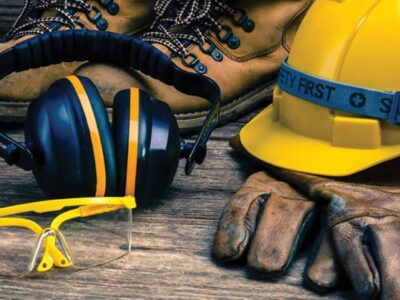Manual lifting is a regular part of many people’s workday. There are various jobs that involve numerous lifting tasks. This includes many jobs in the retail, healthcare, and manufacturing industries.
Now, in addition to being a common workplace task, lifting can also pose dangers to workers. There are circumstances in which lifting can pose injury risks to workers, including musculoskeletal injuries.
The Risks of Manual Lifting in the Workplace
Lifting may appear to be a simple activity, but it remains one of the leading causes of workplace injuries. The strain from improper lifting techniques, heavy or repetitive loads, and awkward body positions can lead to significant health issues.
Common Injuries from Lifting
Workers face different risks depending on the industry, but the most frequently reported injuries include:
- Back and spine injuries, such as strains, sprains, and herniated discs.
- Shoulder and neck problems, caused by overexertion or repeated overhead lifting.
- Knee injuries, particularly common when lifting from the floor without bending properly.
- Repetitive strain injuries develop over time through constant lifting and carrying.
In the healthcare sector, for example, nurses and caregivers often suffer injuries while lifting or repositioning patients. In retail and warehousing, employees may be injured moving shipments or stocking shelves. Construction workers and manufacturing employees also face risks when handling heavy equipment or raw materials.
These injuries not only cause physical pain; they may lead to extended absences from work, costly medical treatment, and, in some cases, permanent disability.
Ergonomics and Preventive Measures
To reduce the likelihood of lifting-related injuries, employers and employees must both focus on ergonomics, the science of designing workplaces and tasks to suit human capabilities.
Preventive measures include:
- Proper lifting techniques: keeping the load close to the body, bending at the knees, and avoiding twisting motions.
- Mechanical aids: using forklifts, dollies, adjustable lift tables, patient-lift devices, or even wearable exoskeletons.
- Job rotation and rest breaks: reducing fatigue by alternating tasks and allowing muscles to recover.
- Employer training programs: OSHA and NIOSH emphasize the employer’s responsibility for providing ergonomic training and ensuring a safe working environment.
Workplace ergonomics programs are crucial not only for preventing injuries but also for enhancing productivity and employee morale.
NIOSH’s NLE Calc: A Tool for Safer Lifting
Recently, a federal agency has made a new tool available that provides workers with direct access to guidance on this topic, right on their phones.
The agency in question is the National Institute for Occupational Safety and Health (NIOSH). The new tool that has been released is a free mobile app called NLE Calc.
The app enables workers to enter data on a load they plan to lift. It then uses the entered data to give a safety score to the load. The score aims to provide a worker with an idea of the level of injury risk associated with lifting the load. The app also provides workers with safety recommendations on lifting loads.
NLE Calc differs from traditional training methods because it provides real-time risk assessments, enabling workers to decide whether they should seek assistance or mechanical support before attempting the lift. While OSHA does not set a fixed maximum lifting weight, NIOSH research often recommends caution when loads exceed 50 pounds without assistance.
The Future of Workplace Safety Technology
As this illustrates, workplace safety awareness is one of the many areas where mobile apps are making an impact. One wonders if there will be substantial growth in the number and functions of workplace safety apps here in the U.S. in the upcoming years.
The trend is clear: technology is transforming workplace safety. Beyond apps like NLE Calc, employers are beginning to adopt:
- Wearable sensors that monitor posture and lifting techniques.
- AI-driven tools that predict injury risks by analyzing worker movements.
- Exoskeletons that support the back and legs during repetitive heavy lifting.
These innovations may significantly reduce the frequency of lifting-related injuries in the future, but until such technologies are widespread, proper training and compliance with ergonomic guidelines remain essential.
Workers’ Compensation and Lifting Injuries
There are many contexts in which what resources a worker has available to them can matter greatly. When on the job, what safety resources a worker has access to can impact their overall safety.
In the aftermath of being hurt on the job — such as suffering a lifting injury — the financial resources available to a worker can significantly impact their efforts to cope with and recover from the effects of their injury. Among the factors that can impact whether such resources are available to a hurt worker is how workers’ compensation matters are handled for the worker.
Workers’ Compensation Coverage
A lifting injury that occurs while performing job duties is generally eligible for workers’ compensation benefits. These may include:
- Medical expenses: doctor visits, hospital treatment, rehabilitation therapy.
- Wage replacement: partial income while recovering and unable to work.
- Permanent disability benefits: if the injury results in long-term impairment.
- Vocational retraining: in cases where returning to the original job is not possible.
Challenges in Workers’ Comp Claims
Not all claims are straightforward. Employers or insurance companies may argue that:
- The injury was not caused by work-related lifting.
- The injury was due to pre-existing conditions.
- The employee failed to report the injury within the required timeframe.
In California, for example, the Division of Workers’ Compensation requires timely reporting and medical documentation. Delays or disputes can jeopardize a worker’s ability to receive full benefits.
This is why many injured workers seek assistance from a knowledgeable attorney who understands both medical evidence and the workers’ comp system.
Get Legal Help
If you have been injured while lifting at work, you may be entitled to compensation for medical bills, lost wages, and ongoing care. At Hussain & Gutierrez, we represent workers who have suffered back injuries, musculoskeletal damage, and other job-related conditions.
Our attorneys have years of experience navigating disputes with employers and insurers, ensuring that injured workers receive the benefits they are entitled to under California law.
Contact Hussain & Gutierrez today to schedule a consultation and learn how we can protect your rights after a workplace lifting injury.
FAQs: Lifting Safety and Legal Rights
What are the most common injuries caused by manual lifting at work?
Back strains, herniated discs, shoulder injuries, and repetitive stress injuries are the most frequent outcomes of unsafe lifting practices.
What is NLE Calc, and how does it help workers?
NLE Calc is a free mobile app developed by NIOSH that calculates lifting risks by analyzing load weight, posture, and frequency, providing workers with immediate safety recommendations.
Are employers legally required to provide lifting equipment or training?
While OSHA does not mandate a strict lifting weight limit, it requires employers to maintain safe workplaces. This includes providing ergonomic training, lifting aids when necessary, and procedures to prevent injury.
Can I file a workers’ compensation claim for a lifting injury?
Yes. If the injury happened while performing your job duties, you may be eligible for workers’ comp benefits. This applies to both acute injuries and repetitive strain injuries that develop over time.
What should I do if my workers’ compensation claim is denied?
If your claim is denied, you have the right to appeal. Working with an attorney like Hussain & Gutierrez increases your chances of success by ensuring all evidence is presented and your rights are fully protected.
Source:
EHS Today, “NIOSH Releases App for Worker Safety While Lifting,” Stefanie Valentic, Aug. 24, 2017



